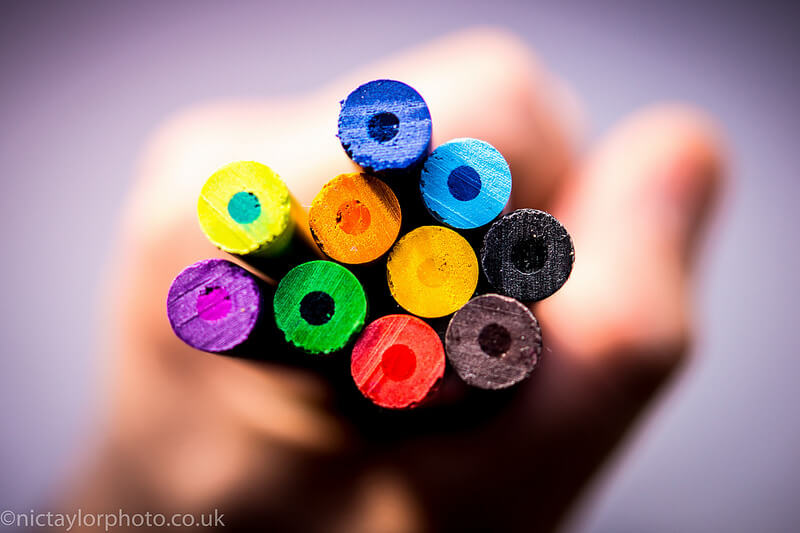Taking time to experiment is one of the best ways to improve your photography. If you feel discouraged when you experiment with new ideas, try focusing on a certain area you’d like to improve. For example, it’s worthwhile to spend time experimenting with color.
Capturing bold colors can be an especially powerful way to create mood in a photo. Next time you want to experiment with bold colors, keep the following 4 tips in mind.
1. Pay attention to all the colors in the photo, both neutral and bold.
Finding a beautiful bright color to photograph is perhaps the easiest part of capturing bold colors. However, to create striking photos with bold colors, you need to be aware of all the colors in the image. While the brightest colors grab your attention, the surrounding (neutral) colors are actually where the beauty lies. They help support the bold colors, like a frame for a painting.
2. Use subtle lighting.
Lighting is always an important factor in photography; you just need to know what kind of lighting to use. When you’re using bold colors to add drama to a photo, you need lighting that doesn’t compete for the viewer’s attention. It shouldn’t be too powerful. Colors are actually easier to record when the lighting is indirect or even subdued.
Consider flower photography. Experienced photographers head to flower gardens when the day is overcast and gloomy. Intense light can cause colors to reflect or bleed into one another, so flowers are brighter without strong sunlight. The muted light allows their color to really “pop.”
3. Get a polarizing filter.
You can’t always head out to shoot photos when the lighting is ideal. Terrible lighting shouldn’t stop you from taking great photos, though. You just need to get the right gear so you can always go home with a good shot. For bold colors, you’ll need a polarizing filter (and know how to use it). A polarizing filter is often used to reduce glare, but you can also use it to intensify color.
Take plenty of time to experiment with the filter. You can’t just screw it into your lens and expect awesome photos. You’ll have to angle it properly to the subject in order to control the vibrancy of the light.
Dave Allen – North Carolina Blue Ridge Parkway – Appalachian Allure

4. Experiment with f-Stop.
If a filter isn’t an option, you can achieve a similar effect by taking your settings down a single stop. In other words, adjust the aperture down (which actually increases the number of the setting by one measure). This reduces light into the lens. By limiting the light, you’ll end up with photos that resemble those taken with a filter.
Similarly, you could dial down the ISO. Taking down the ISO will make your camera sensor less sensitive to light, which will give you the same results.
James Drury – oscillate wildly

Regardless of the technique you use, remember that capturing and intensifying color will change the mood of your photo. For example, autumn leaves can have warm or somber appearance depending on how intense the colors are. Brilliant yellows and reds can create a sense of warmth, while fading those colors to brown gives the image a more melancholy feel.
These moods shouldn’t depend on color alone. To make your photo as powerful as possible, keep the mood consistent. The composition and concept should work together with bold colors to create a compelling, beautiful image.
These photos were selected from our Flickr group. Next time you capture beautiful bold colors, share your photo with the group so we can admire your work!



